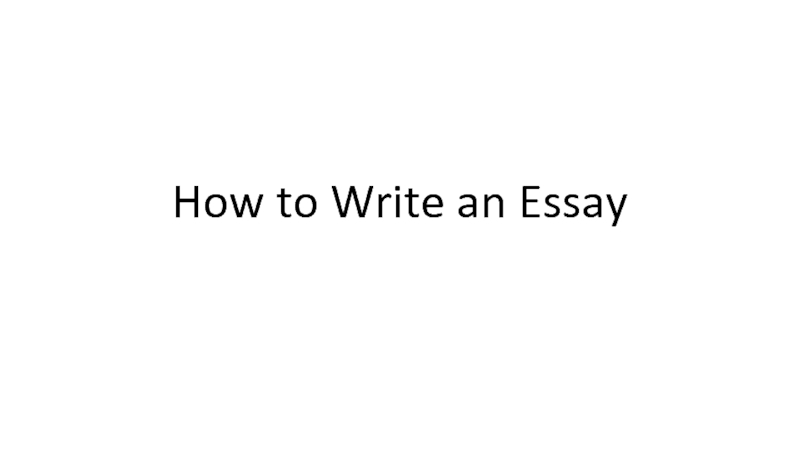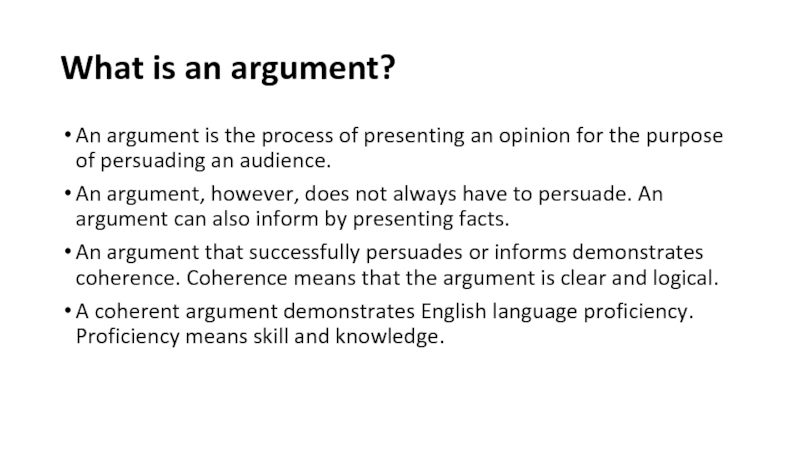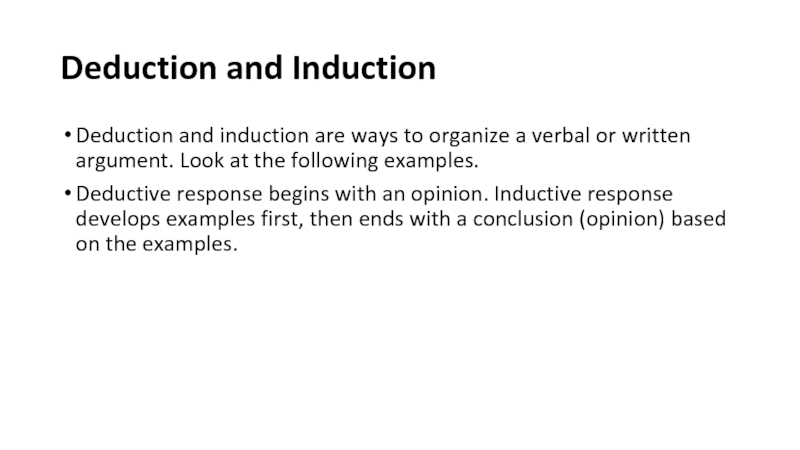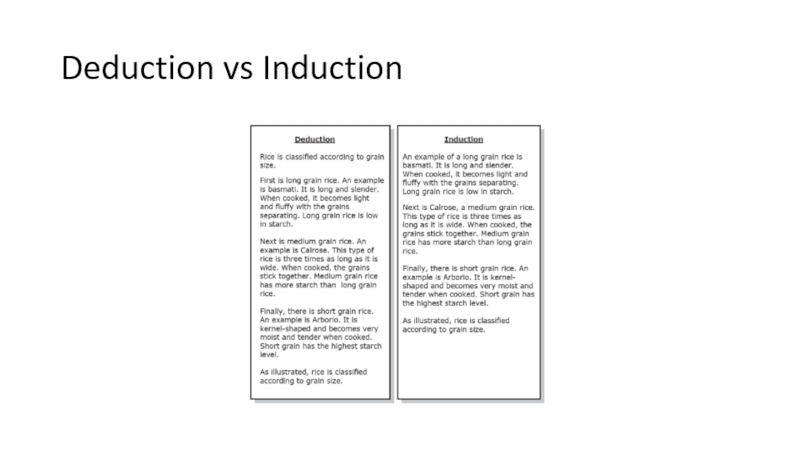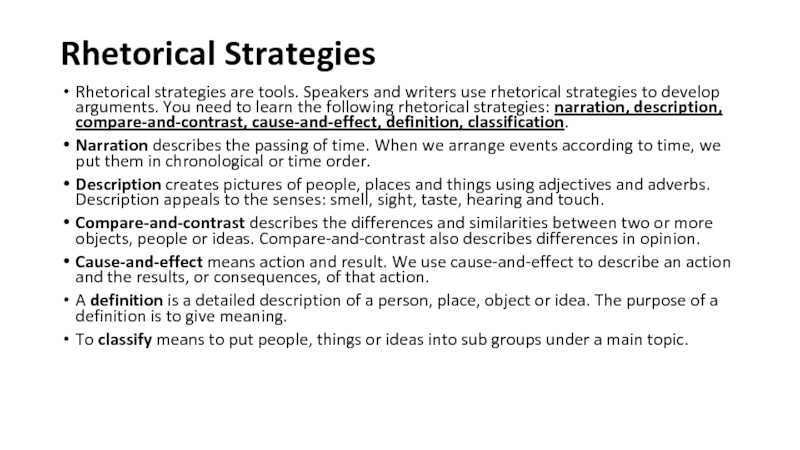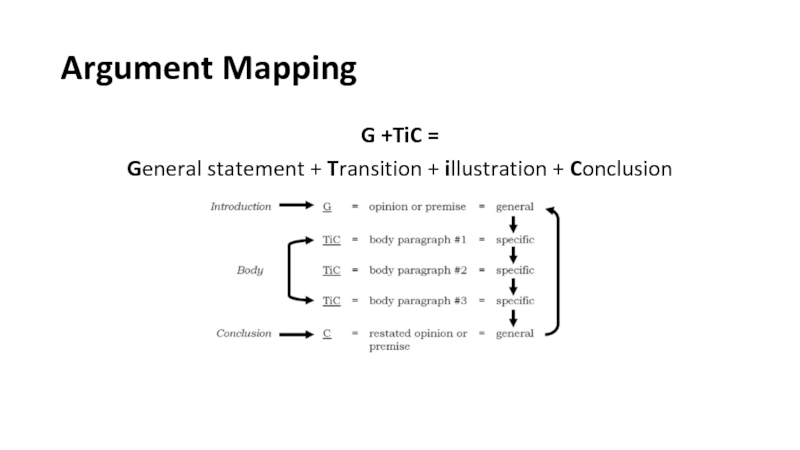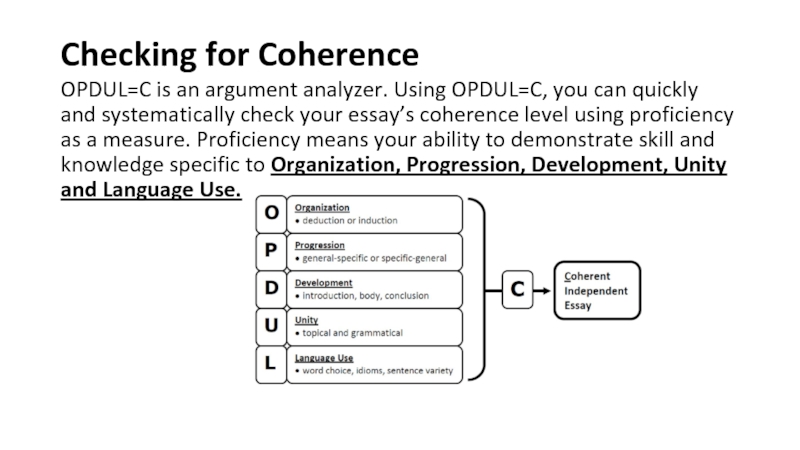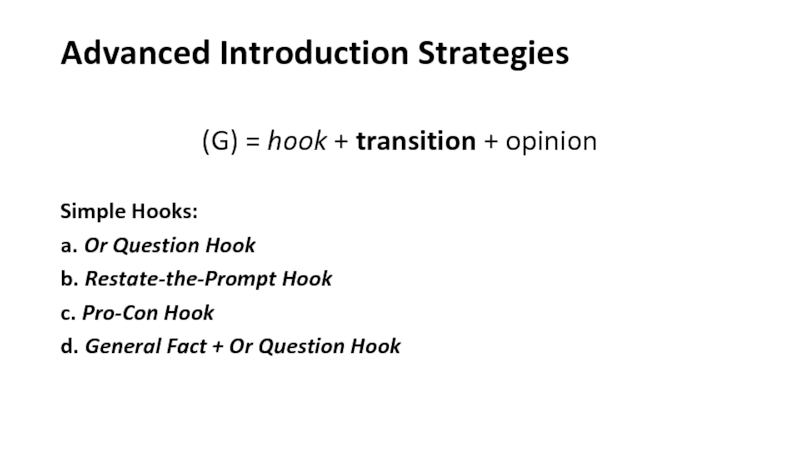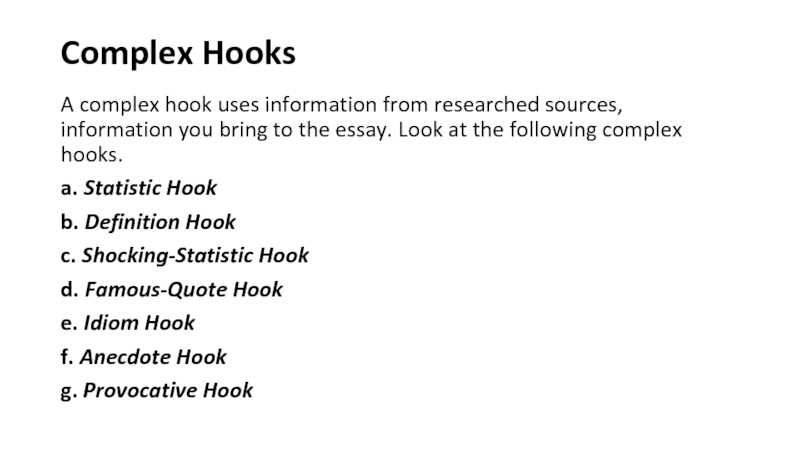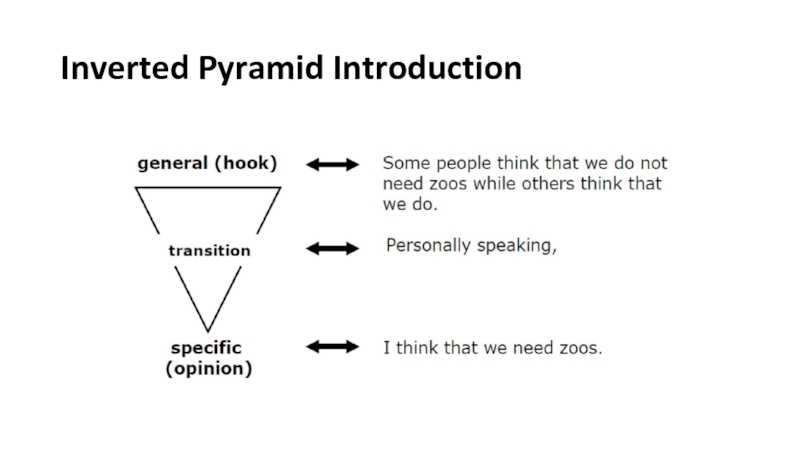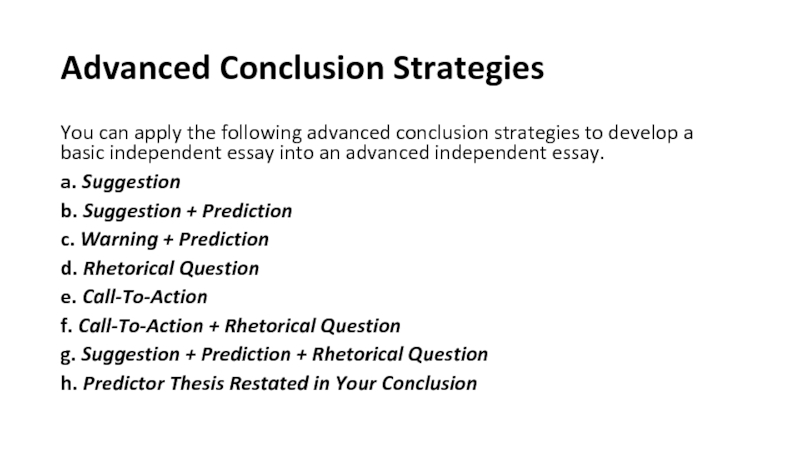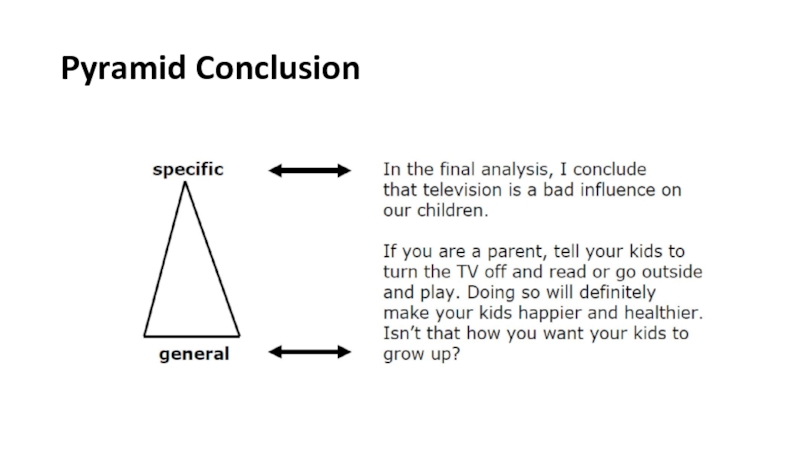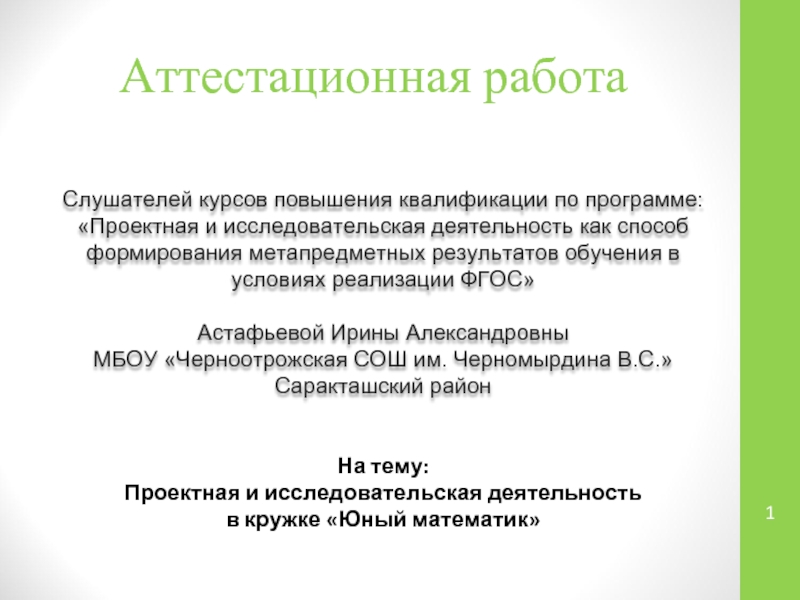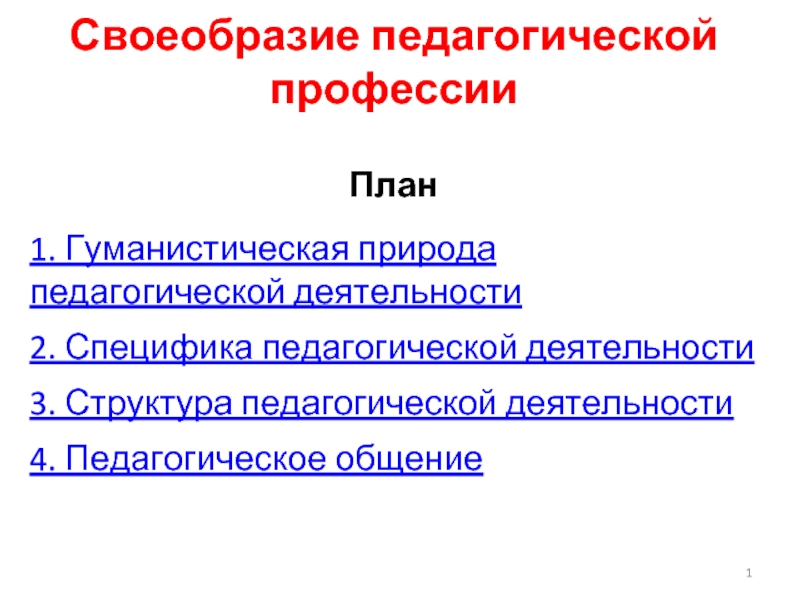- Главная
- Разное
- Дизайн
- Бизнес и предпринимательство
- Аналитика
- Образование
- Развлечения
- Красота и здоровье
- Финансы
- Государство
- Путешествия
- Спорт
- Недвижимость
- Армия
- Графика
- Культурология
- Еда и кулинария
- Лингвистика
- Английский язык
- Астрономия
- Алгебра
- Биология
- География
- Детские презентации
- Информатика
- История
- Литература
- Маркетинг
- Математика
- Медицина
- Менеджмент
- Музыка
- МХК
- Немецкий язык
- ОБЖ
- Обществознание
- Окружающий мир
- Педагогика
- Русский язык
- Технология
- Физика
- Философия
- Химия
- Шаблоны, картинки для презентаций
- Экология
- Экономика
- Юриспруденция
How to Write an Essay презентация
Содержание
- 1. How to Write an Essay
- 2. What is an argument? An argument is
- 3. Deduction and Induction Deduction and induction are
- 4. Deduction vs Induction
- 5. Rhetorical Strategies Rhetorical strategies are tools. Speakers
- 6. Argument Mapping G +TiC = General statement + Transition + illustration + Conclusion
- 7. Checking for Coherence OPDUL=C is an argument
- 8. Advanced Introduction Strategies (G) = hook
- 9. Complex Hooks A complex hook uses information
- 10. Inverted Pyramid Introduction
- 11. Advanced Conclusion Strategies You can apply the
- 12. Pyramid Conclusion
Слайд 2What is an argument?
An argument is the process of presenting an
opinion for the purpose of persuading an audience.
An argument, however, does not always have to persuade. An argument can also inform by presenting facts.
An argument that successfully persuades or informs demonstrates coherence. Coherence means that the argument is clear and logical.
A coherent argument demonstrates English language proficiency. Proficiency means skill and knowledge.
An argument, however, does not always have to persuade. An argument can also inform by presenting facts.
An argument that successfully persuades or informs demonstrates coherence. Coherence means that the argument is clear and logical.
A coherent argument demonstrates English language proficiency. Proficiency means skill and knowledge.
Слайд 3Deduction and Induction
Deduction and induction are ways to organize a verbal
or written argument. Look at the following examples.
Deductive response begins with an opinion. Inductive response develops examples first, then ends with a conclusion (opinion) based on the examples.
Deductive response begins with an opinion. Inductive response develops examples first, then ends with a conclusion (opinion) based on the examples.
Слайд 5Rhetorical Strategies
Rhetorical strategies are tools. Speakers and writers use rhetorical strategies
to develop arguments. You need to learn the following rhetorical strategies: narration, description, compare-and-contrast, cause-and-effect, definition, classification.
Narration describes the passing of time. When we arrange events according to time, we put them in chronological or time order.
Description creates pictures of people, places and things using adjectives and adverbs. Description appeals to the senses: smell, sight, taste, hearing and touch.
Compare-and-contrast describes the differences and similarities between two or more objects, people or ideas. Compare-and-contrast also describes differences in opinion.
Cause-and-effect means action and result. We use cause-and-effect to describe an action and the results, or consequences, of that action.
A definition is a detailed description of a person, place, object or idea. The purpose of a definition is to give meaning.
To classify means to put people, things or ideas into sub groups under a main topic.
Narration describes the passing of time. When we arrange events according to time, we put them in chronological or time order.
Description creates pictures of people, places and things using adjectives and adverbs. Description appeals to the senses: smell, sight, taste, hearing and touch.
Compare-and-contrast describes the differences and similarities between two or more objects, people or ideas. Compare-and-contrast also describes differences in opinion.
Cause-and-effect means action and result. We use cause-and-effect to describe an action and the results, or consequences, of that action.
A definition is a detailed description of a person, place, object or idea. The purpose of a definition is to give meaning.
To classify means to put people, things or ideas into sub groups under a main topic.
Слайд 7Checking for Coherence
OPDUL=C is an argument analyzer. Using OPDUL=C, you can
quickly and systematically check your essay’s coherence level using proficiency as a measure. Proficiency means your ability to demonstrate skill and knowledge specific to Organization, Progression, Development, Unity and Language Use.
Слайд 8Advanced Introduction Strategies
(G) = hook + transition + opinion
Simple Hooks:
a. Or
Question Hook
b. Restate-the-Prompt Hook
c. Pro-Con Hook
d. General Fact + Or Question Hook
b. Restate-the-Prompt Hook
c. Pro-Con Hook
d. General Fact + Or Question Hook
Слайд 9Complex Hooks
A complex hook uses information from researched sources, information you
bring to the essay. Look at the following complex hooks.
a. Statistic Hook
b. Definition Hook
c. Shocking-Statistic Hook
d. Famous-Quote Hook
e. Idiom Hook
f. Anecdote Hook
g. Provocative Hook
a. Statistic Hook
b. Definition Hook
c. Shocking-Statistic Hook
d. Famous-Quote Hook
e. Idiom Hook
f. Anecdote Hook
g. Provocative Hook
Слайд 11Advanced Conclusion Strategies
You can apply the following advanced conclusion strategies to
develop a basic independent essay into an advanced independent essay.
a. Suggestion
b. Suggestion + Prediction
c. Warning + Prediction
d. Rhetorical Question
e. Call-To-Action
f. Call-To-Action + Rhetorical Question
g. Suggestion + Prediction + Rhetorical Question
h. Predictor Thesis Restated in Your Conclusion
a. Suggestion
b. Suggestion + Prediction
c. Warning + Prediction
d. Rhetorical Question
e. Call-To-Action
f. Call-To-Action + Rhetorical Question
g. Suggestion + Prediction + Rhetorical Question
h. Predictor Thesis Restated in Your Conclusion
